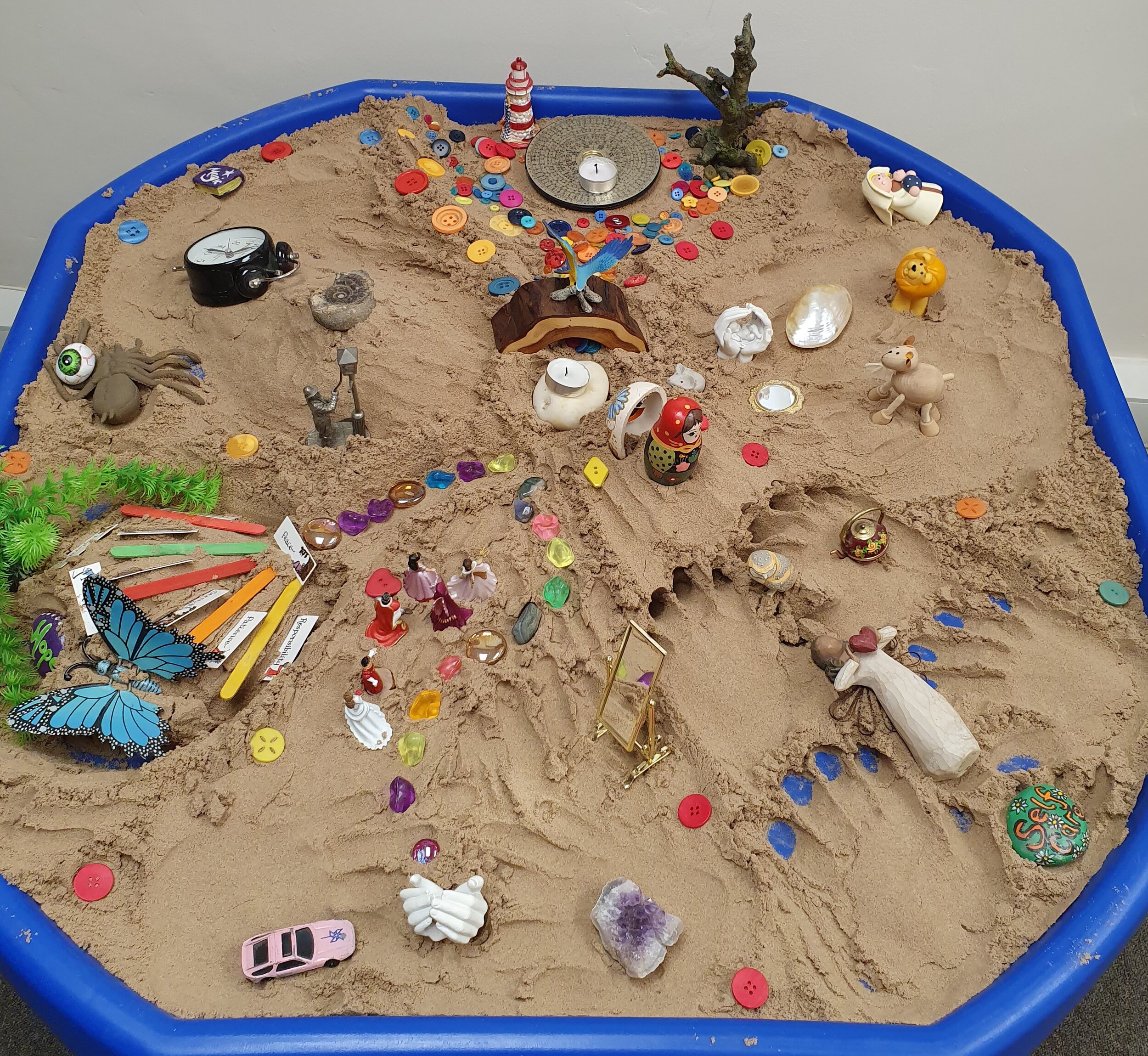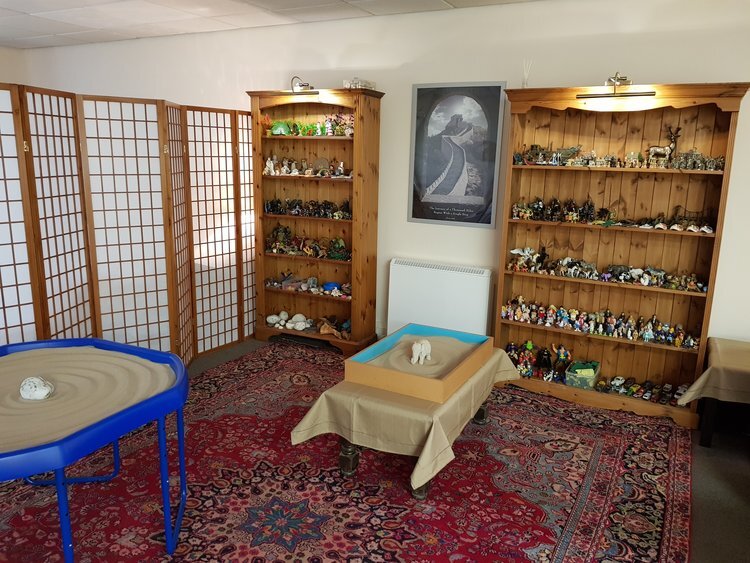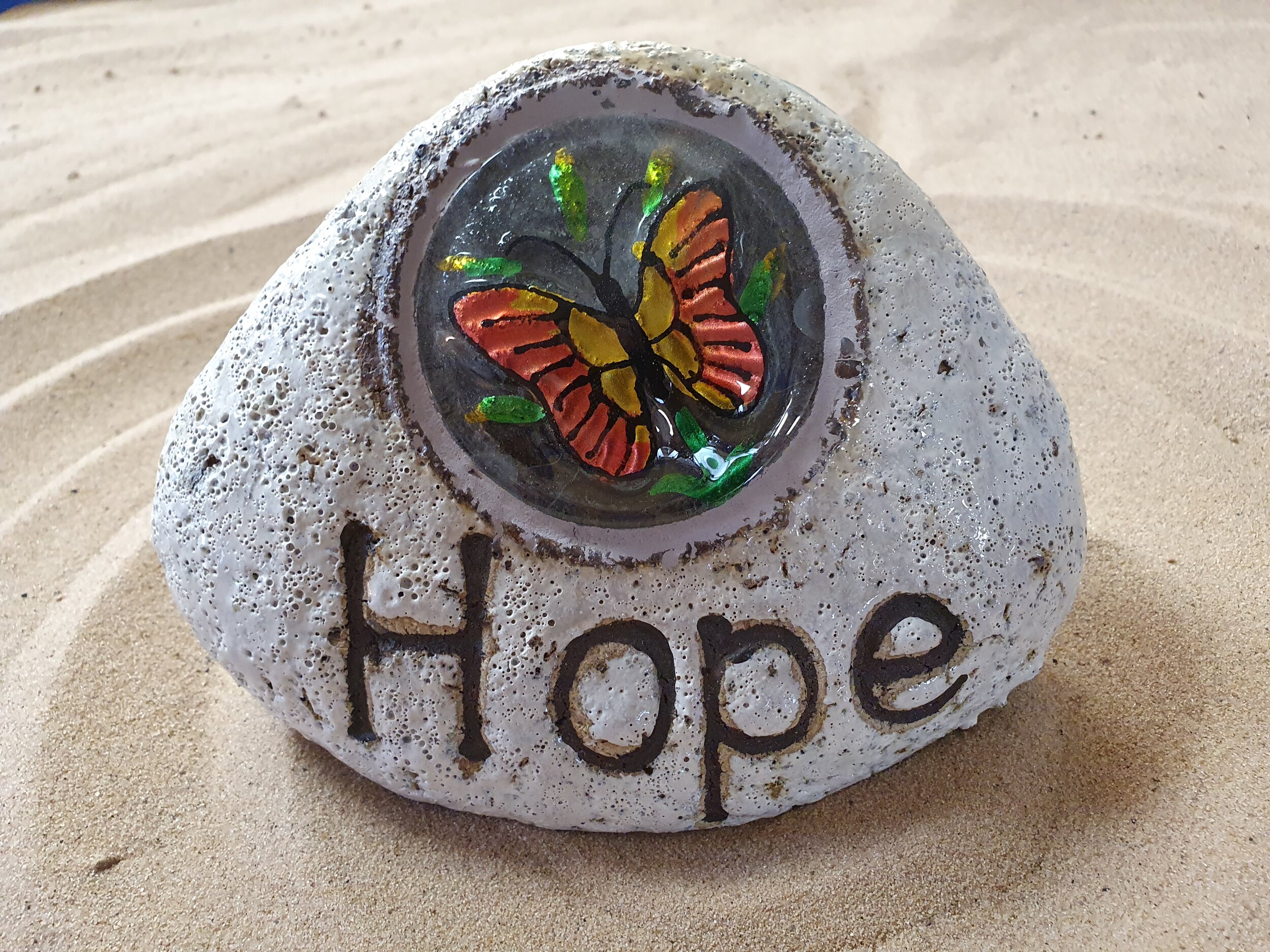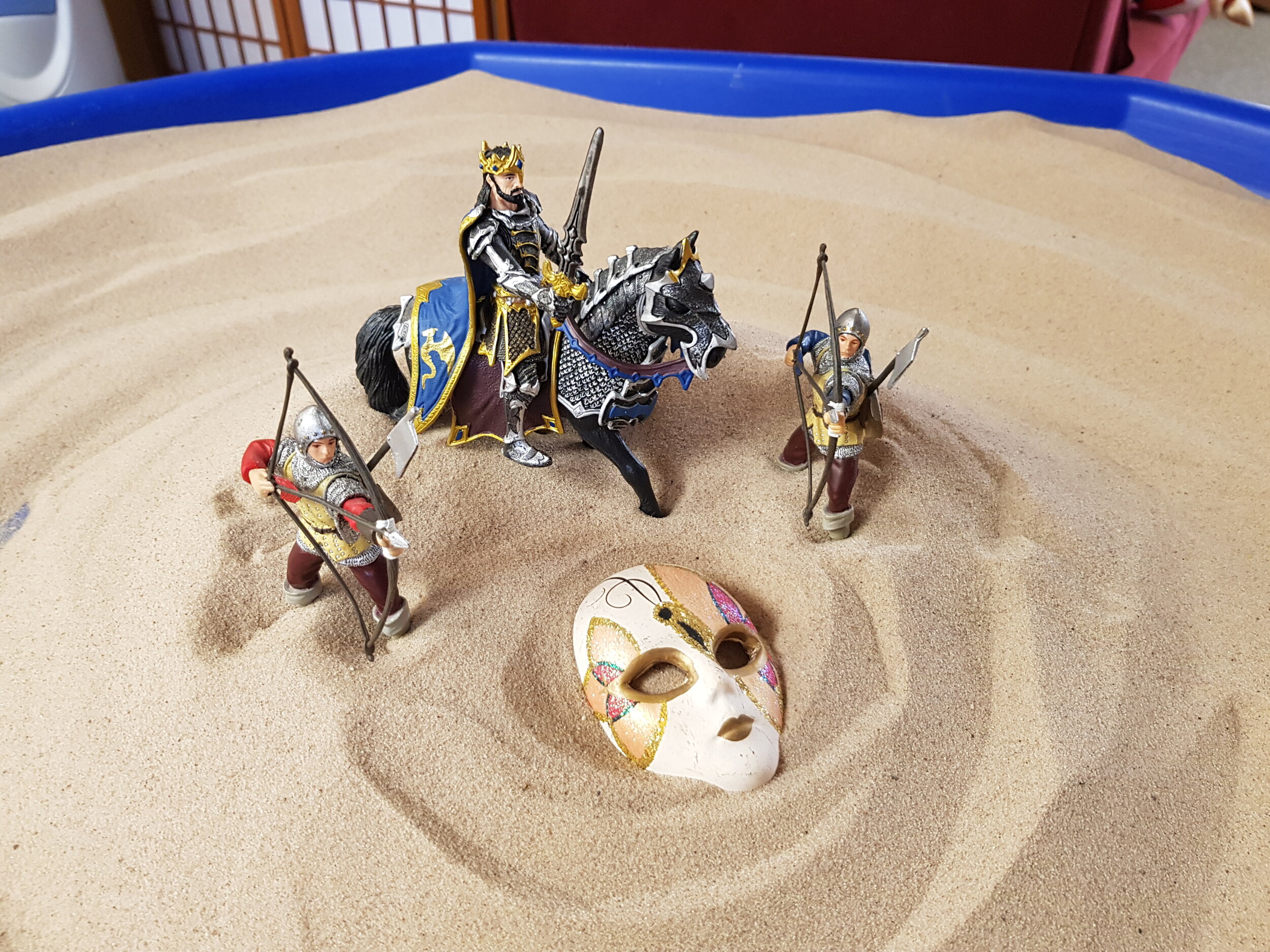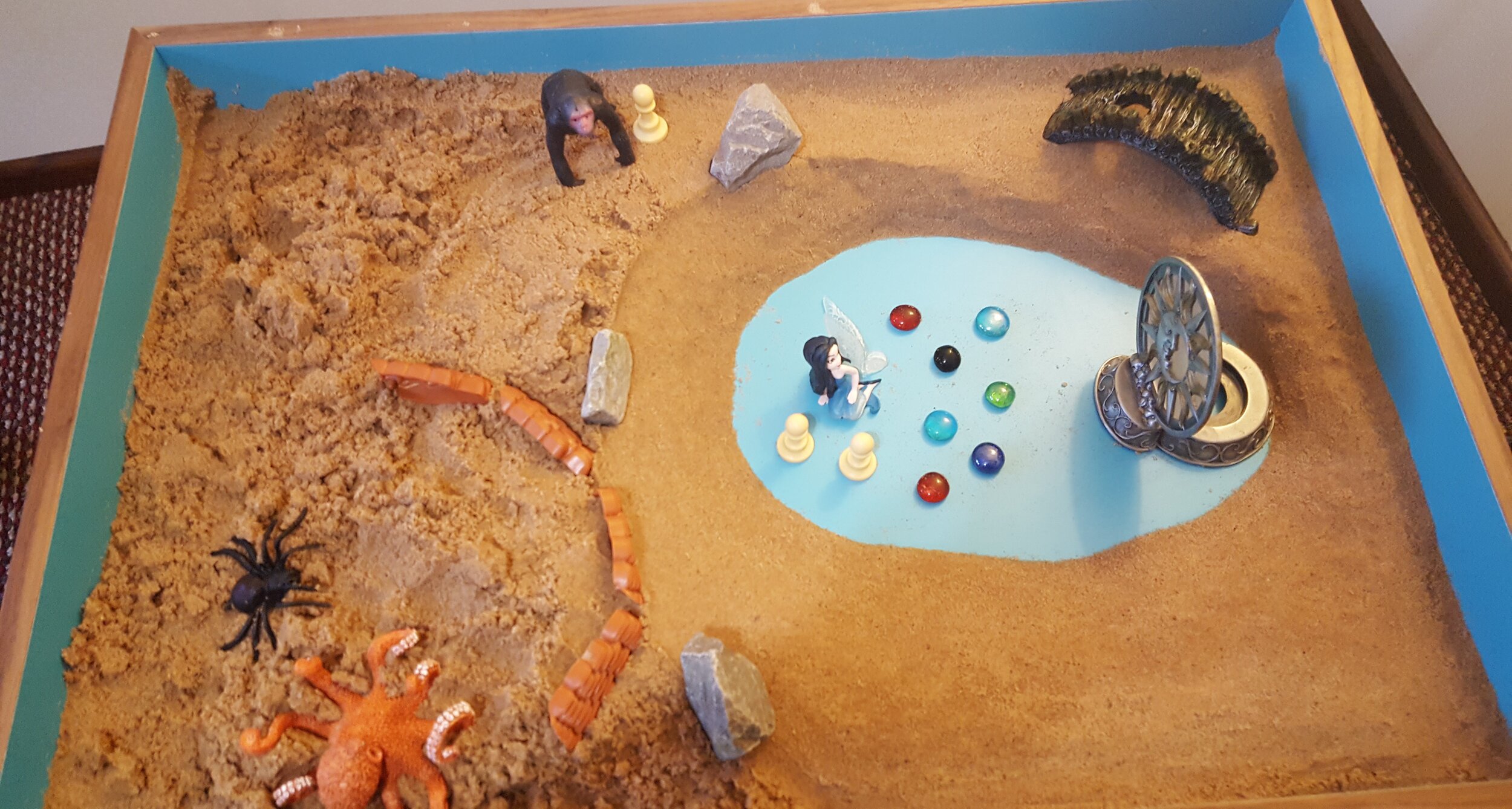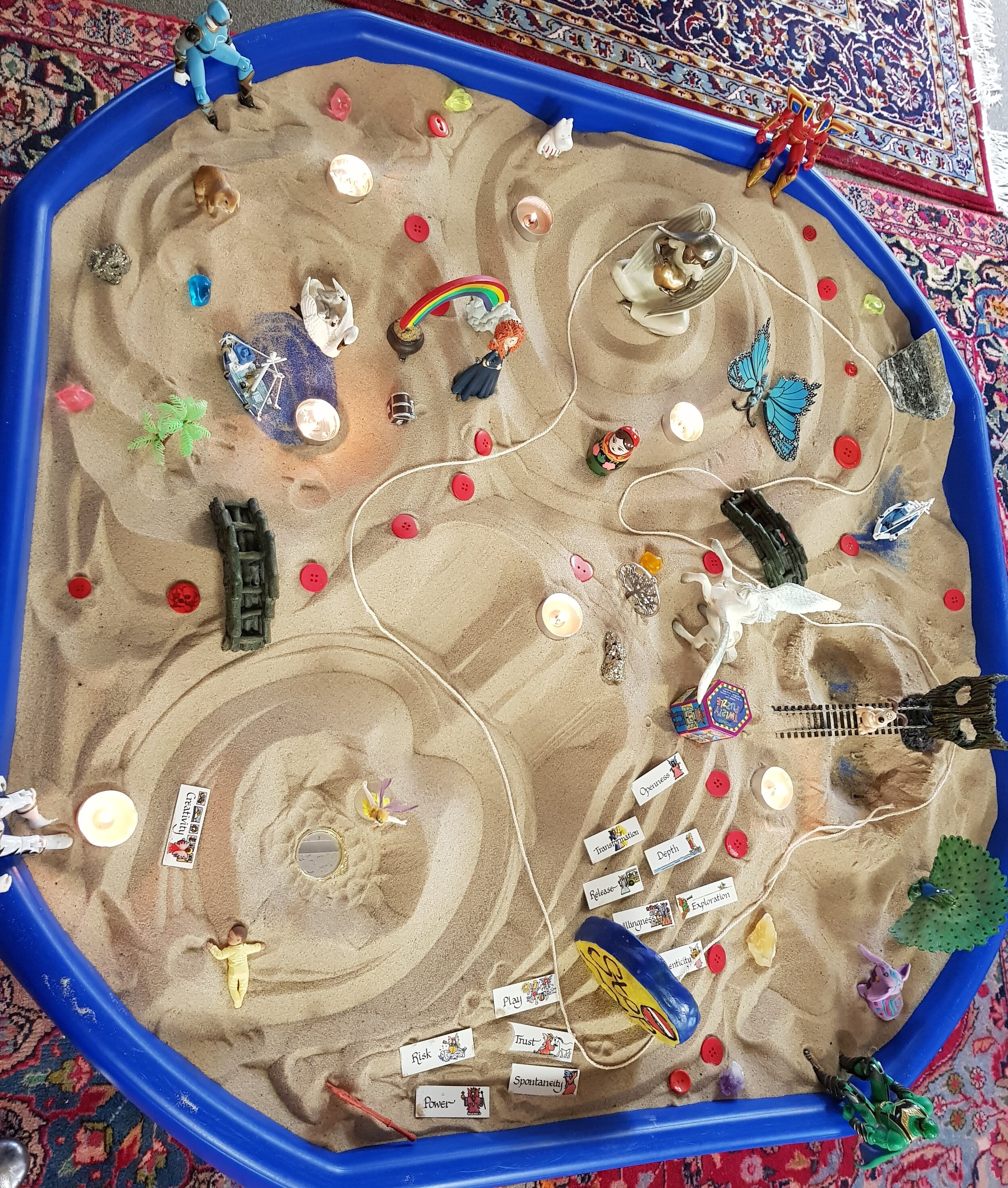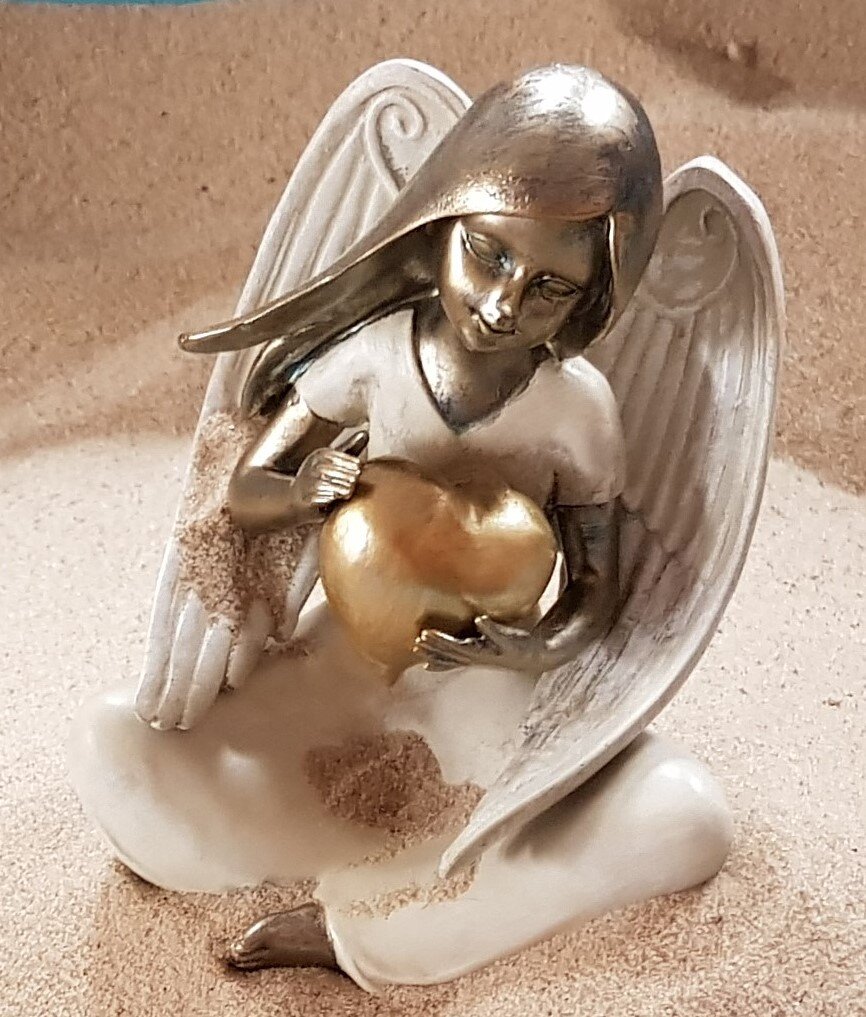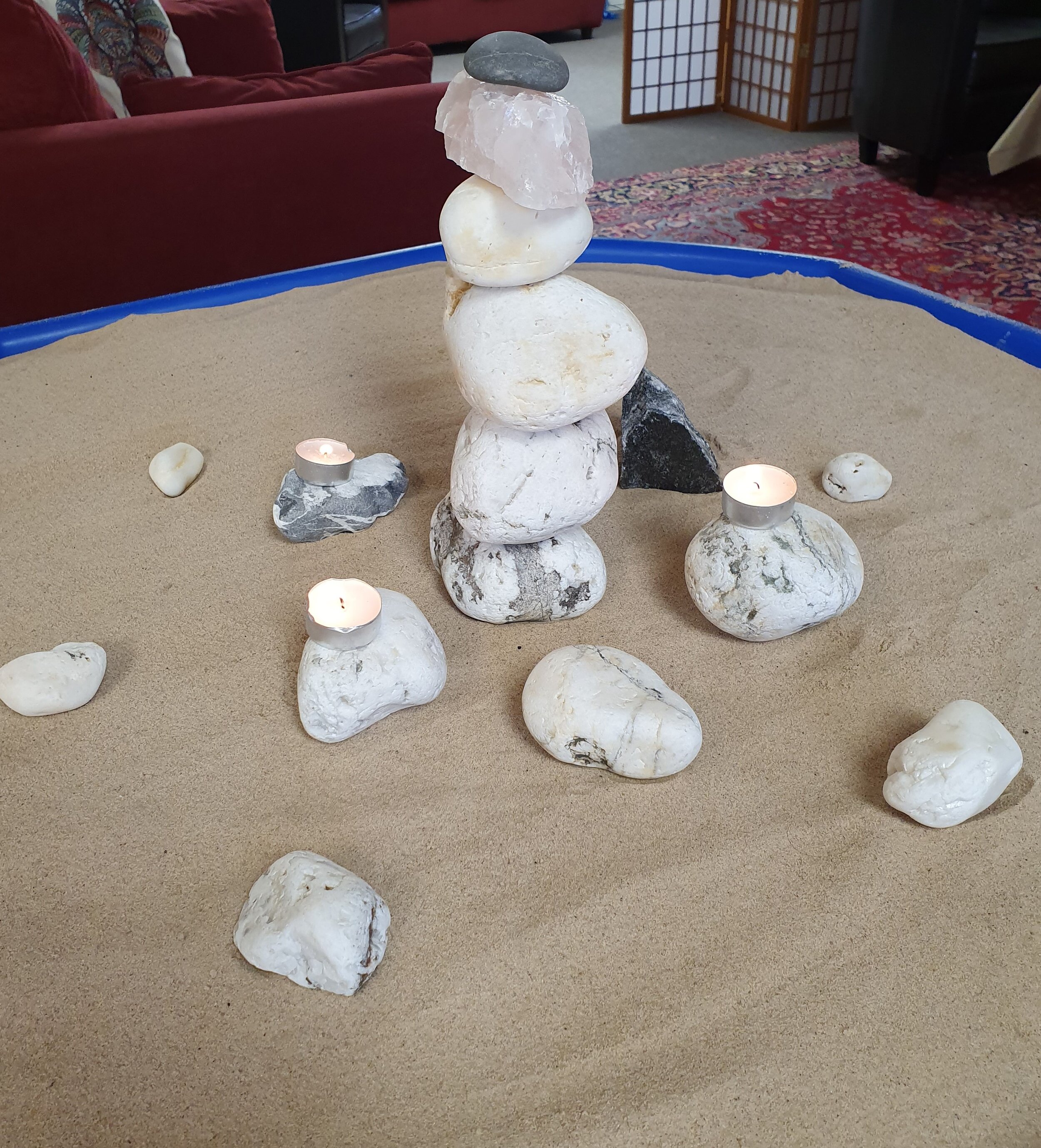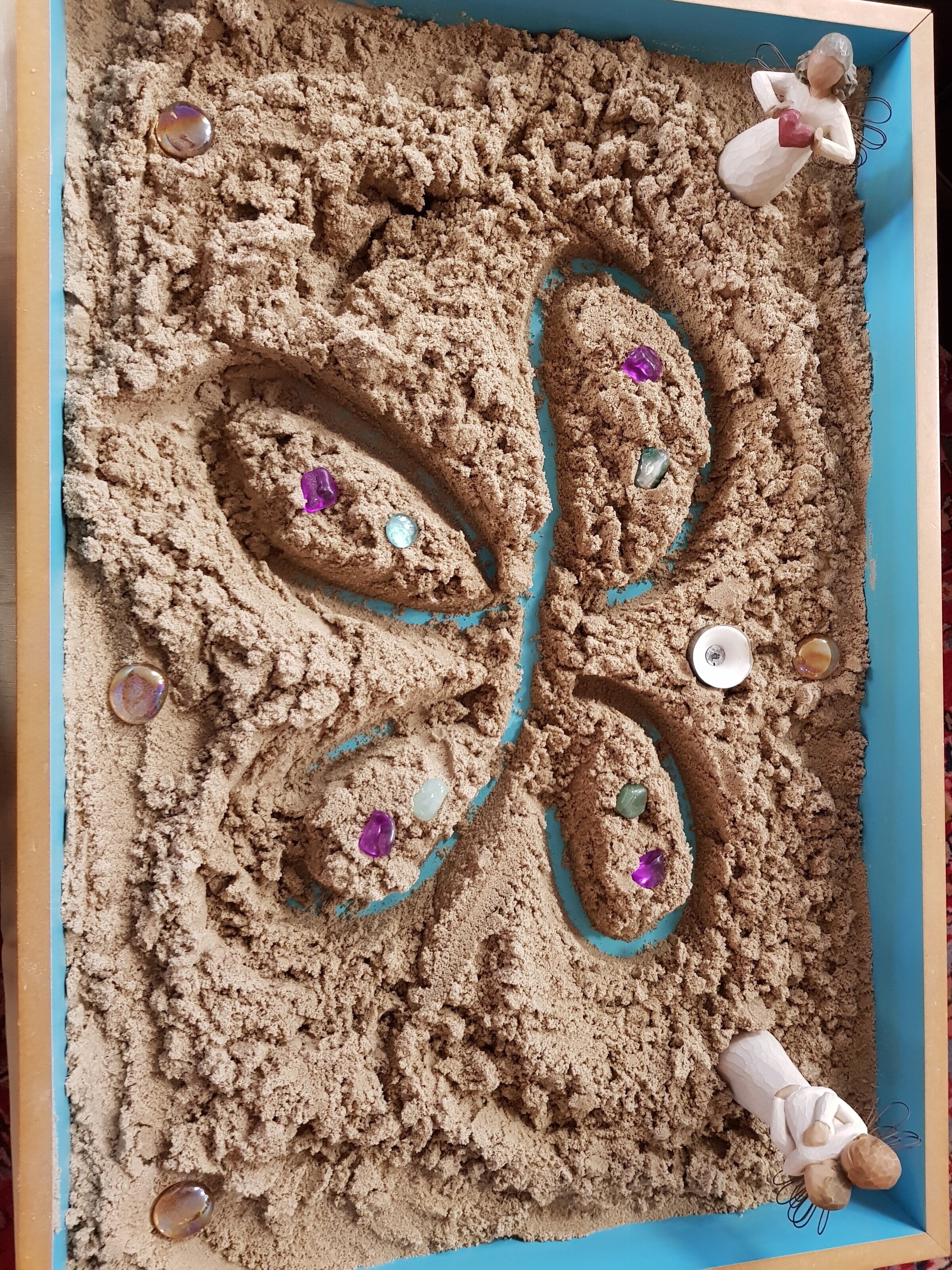Sandtray Therapy
When you arrive at The Way Forward Centre you will be met by shelves ladden with miniature objects. These are known as ‘miniatures’ or ‘small world objects’. You will also notice sand trays of varying shapes and sizes around the room and may feel puzzled by them. This approach to therapy is used for Adults as well as Young People, it is a way of projecting your story into the safe container of the sand tray and exploring your thoughts, feelings and experiences in a visual, three dimensional way. It is a very powerful way of expressing your experience and you may find you gain deep insight into your challenges by taking the opportunity to work creatively with the sand. Clients who decide to work this way are often surprised by the depth of awareness and insight gained and often continue working with sand going forward.
Dr Kirsty Bilski has studied this approach for many years and the use of sandtray is also central to her PhD studies, she also trains other professionals in the intricacies of safe and ethical practice using sand. It can initially feel unsettling as you first put your hands in the sand but very quickly you will discover the transformative qualities of working this way. Kirsty will carefully help you to start the process, once you have explored the possibilities of the sand the first time, you will naturally feel more confident the next time.
A traditional sand tray is blue on the inside to represent water, and once you have moulded the sand as you require it you would then choose miniature objects which represent aspects of your world. They might represent people, feelings, experiences, thoughts, challenges or even stories represented as metaphors. The shelves of miniatures contain objects which represent all aspects of life, where something is missing a client can choose to use stones, shells, buttons, gems or other natural objects to creatively fill in any gaps
The scenes that are created are best completed with very little thought, it is best to create your sandtray as you are drawn in the moment to do. It might feel random and disconnected, and you may feel as though nothing you have chosen has any meaning whatsoever. However, as you build your tray it may silently begin to hold meaning for you, or you might reflect on it and you begin to discover what your tray means for you. The best way to approach the process is to be curious, interested and go with your instinctual response in choosing the objects you take to the sand.
Some clients spend time completing their sandtrays in silence and choose not to speak about it, which makes this approach ideal for those who find verbalising their difficulties so challenging. Others enjoy verbally exploring their sand tray scenes, processing the content and enabling them to arrive at more concrete realisations. Form a theoretical perspective working with sandtray enables clients to project unconscious content into the tray, presenting that which was hidden in the unconscious mind and projecting it externally into the tray where it can be worked on. This process enables a client to process what is now conscious and to make life choices regarding that new awareness.
As you complete further sand trays, you may find your scenes change, and the story develops, as you begin working out your challenges and discovering a way forward. It is useful to take a photograph of your completed sand tray scenes so you can reflect on your process over the coming weeks. The scenes may begin to make more sense to you when you see them progress over the weeks. It is an interesting and intriguing process with the potential to explore incredible depth of awareness and emotion.
If you would like to use sand in your therapy, please feel free to discuss this option with Kirsty. It can be useful to think about booking a longer session (1.5 hrs) as the time goes very quickly using this approach. However, It is also possible to complete a sandtray in a one hour session. Adults and young people alike find using sandtray useful, once taking the step to work this way it is surprising what can be achieved!
Please see below a carousel of sandtray pictures to give you an idea of what sandtray scenes can look like when they are completed.

